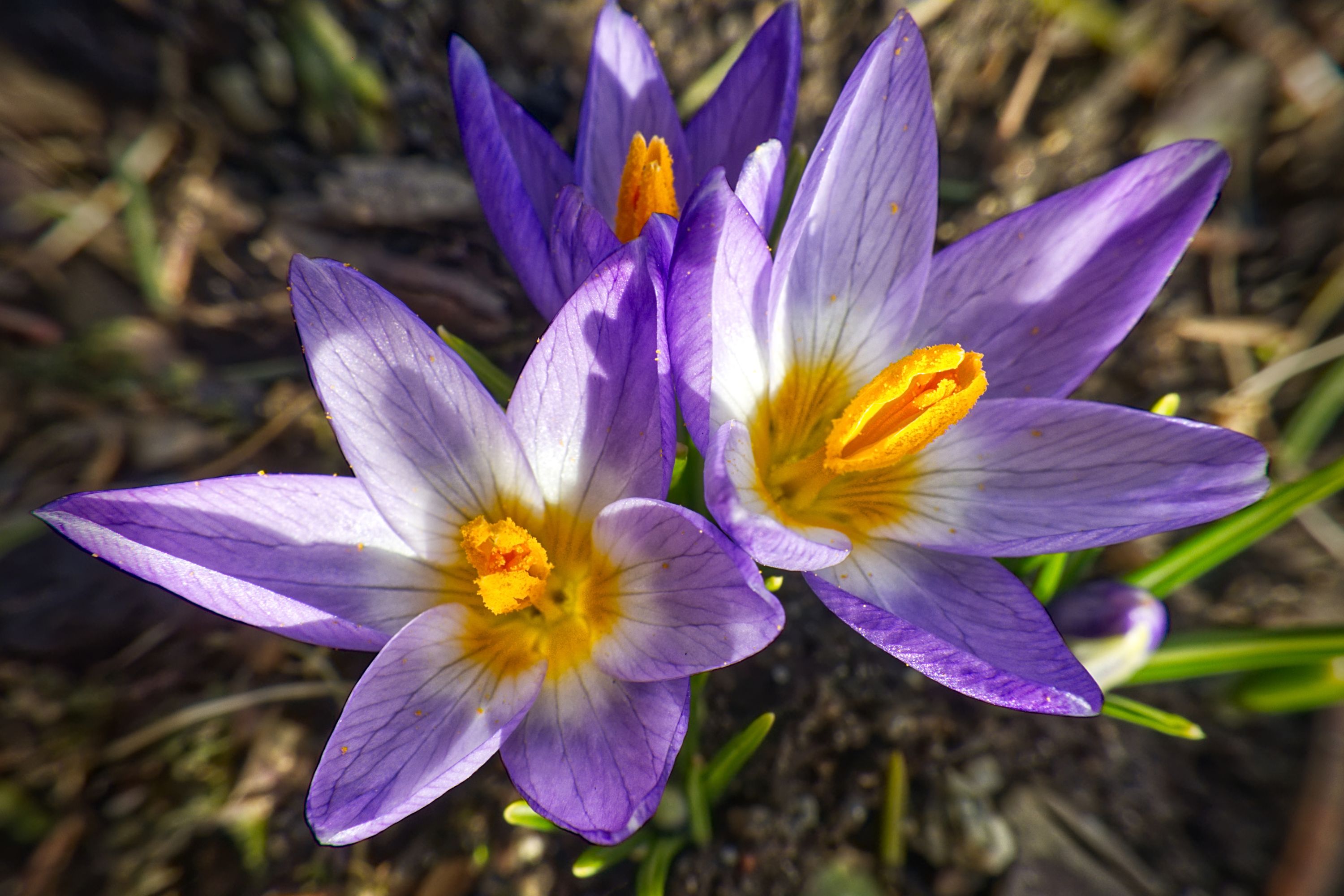Tricolor crocus
(Crocus sieberi)

Description
Crocus sieberi is a species of crocus native to Turkey, Greece, and the Balkans. This stunning plant is part of the Iridaceae family and is renowned for its distinctive blue-violet flowers that bloom in early spring. In this article, we will explore the various characteristics and features of the Crocus sieberi plant in detail. Taxonomy and Nomenclature Crocus sieberi was first described by Anton Kerner von Marilaun in 1862, based on a specimen collected in the Balkans. The plant is named after Franz von Sieber, a nineteenth-century Austrian botanist who collected plants extensively in Greece and the Balkans. Description Crocus sieberi is a small, herbaceous perennial plant that grows to a height of 10-15cm. The plant has corms, which are small, bulb-like structures that store nutrients for the plant. The leaves of Crocus sieberi are narrow, grass-like, and grow to a length of 5-10cm. The flowers of Crocus sieberi are the plant's most distinctive feature. They are deep blue-violet in color and have a striking golden-yellow throat. The flowers are cup-shaped, with six petals arranged in a whorl. They measure 2-4cm in diameter and are borne on a single stem. The plant blooms in early spring, usually in February or March. Distribution and Habitat Crocus sieberi is native to Turkey, Greece, and the Balkans. The plant is commonly found in rocky, mountainous areas, at altitudes of up to 2000m. It prefers well-drained soil and a sunny, sheltered position. The plant can tolerate cold temperatures and is hardy to USDA zones 4-9. Cultivation and Propagation Crocus sieberi is a popular garden plant, and many cultivars are available. The plant is easy to grow and requires well-drained soil, full sun, and regular watering during the growing season. The corms should be planted in the fall, at a depth of 5-7cm. They should be spaced 5-10cm apart. The plant will naturalize readily and will form clumps over time. Propagation can be done by dividing the clumps in the fall or by sowing seeds in the spring. The seeds should be sown in a well-draining soil mix and kept moist until they germinate. Once the seedlings are large enough to handle, they can be transplanted into individual pots and grown on until they are large enough to be planted in the garden. Uses Crocus sieberi has several uses, including: Ornamental purposes: Crocus sieberi is a popular garden plant and is widely grown for its beautiful blue-violet flowers. The plant is commonly used in rock gardens, borders, and containers, and can add a burst of color to any landscape. Medicinal purposes: The corms of Crocus sieberi have been used in traditional medicine to treat a variety of ailments, including coughs, colds, and rheumatism. The corms contain compounds called crocins and safranal, which have anti-inflammatory and antioxidant properties. Culinary purposes: The corms of Crocus sieberi are also edible and have been used in cooking for centuries. The corms can be dried and ground to make a spice called saffron, which is commonly used in Middle Eastern and Mediterranean cuisine. Cultural significance: Crocus sieberi has cultural significance in many countries where it is found. In Greece, for example, the plant is associated with the goddess Persephone and is often used in religious ceremonies. Overall, Crocus sieberi is a versatile plant with several practical and cultural uses. Conservation Status The conservation status of Crocus sieberi is currently considered to be of "Least Concern" according to the International Union for Conservation of Nature (IUCN) Red List. This means that the species is not facing any major threats and its population is stable. However, like many plant species, Crocus sieberi may be affected by habitat loss due to human activities, climate change, and other environmental factors. It is important to monitor the population of Crocus sieberi and conserve its habitat to ensure its long-term survival. In conclusion, Crocus sieberi is a beautiful and easy-to-grow plant that is well-suited to rock gardens, borders, and containers. Its distinctive blue-violet flowers are a welcome sight in early spring, and its corms have been used for medicinal purposes for centuries. Whether you are a seasoned gardener or a beginner, Crocus sieberi is a great addition to any garden.
Taxonomic tree:







